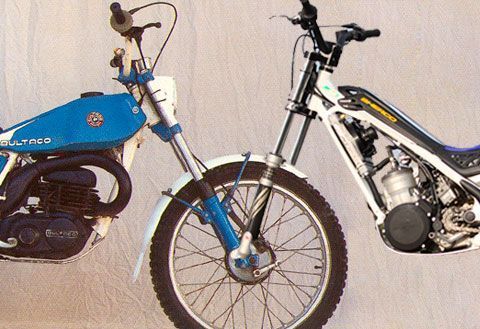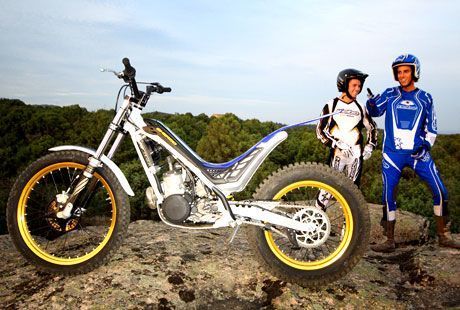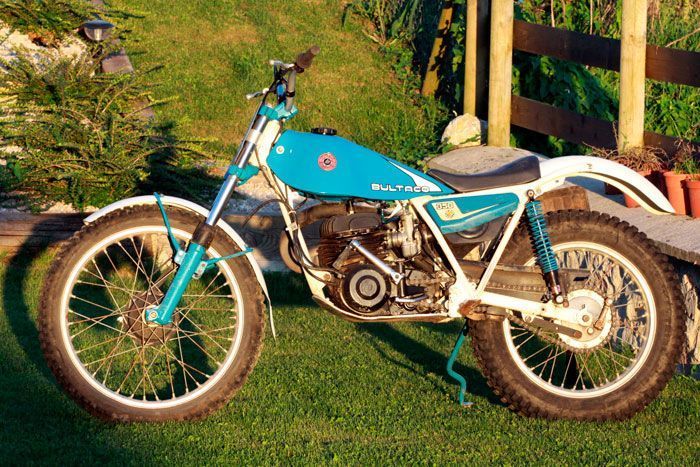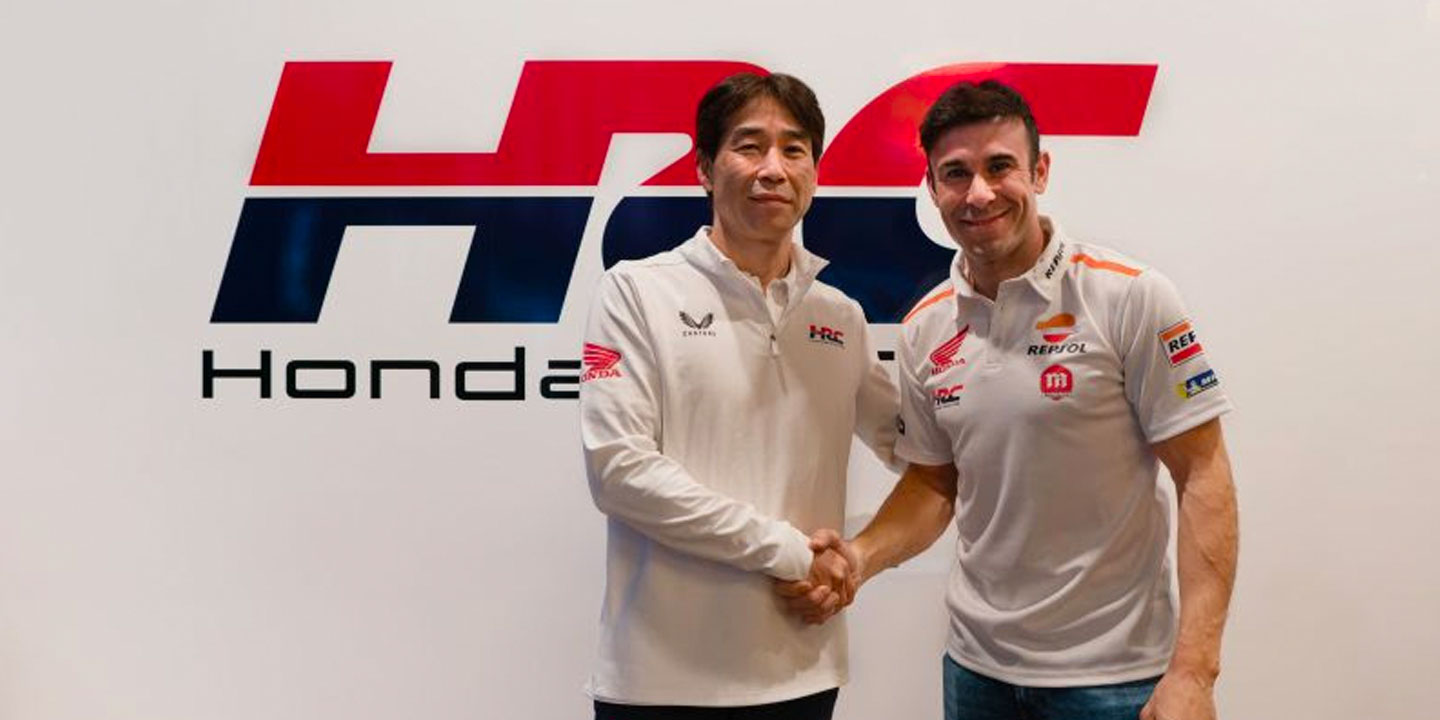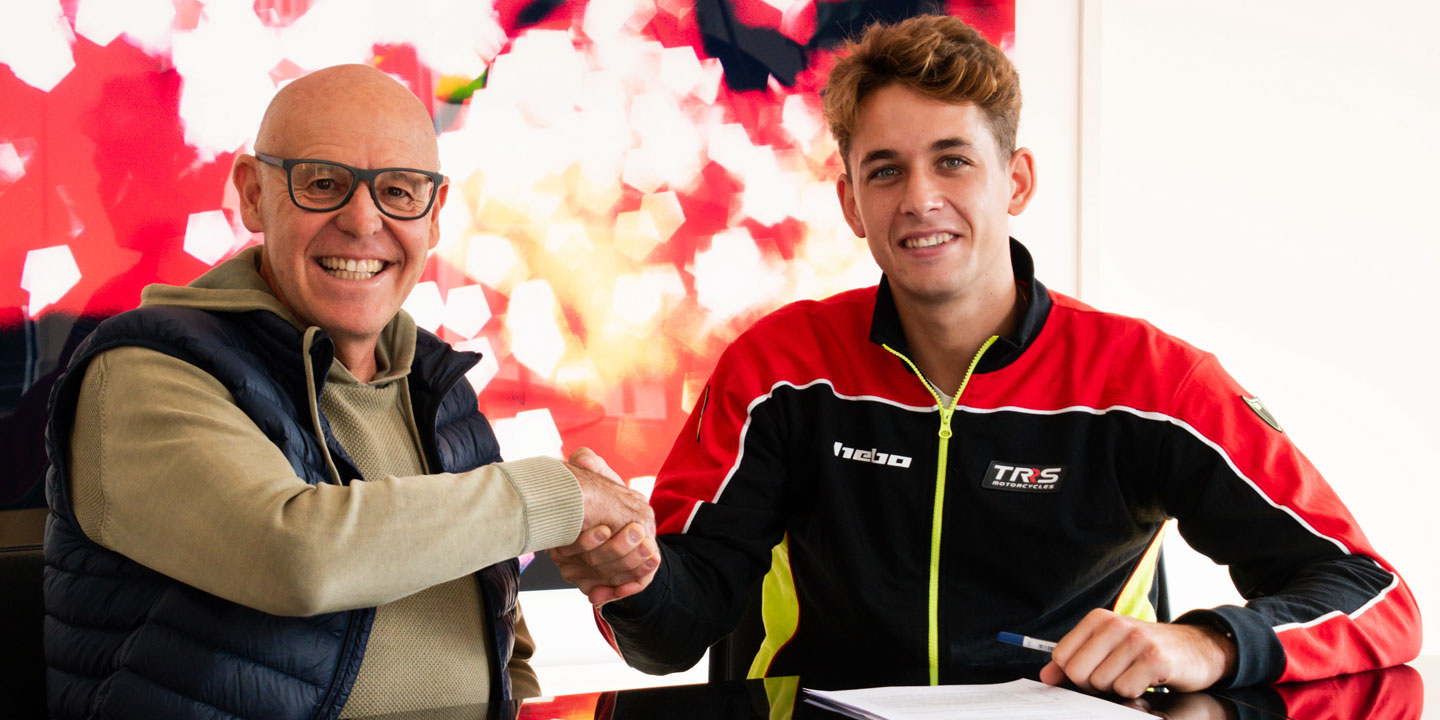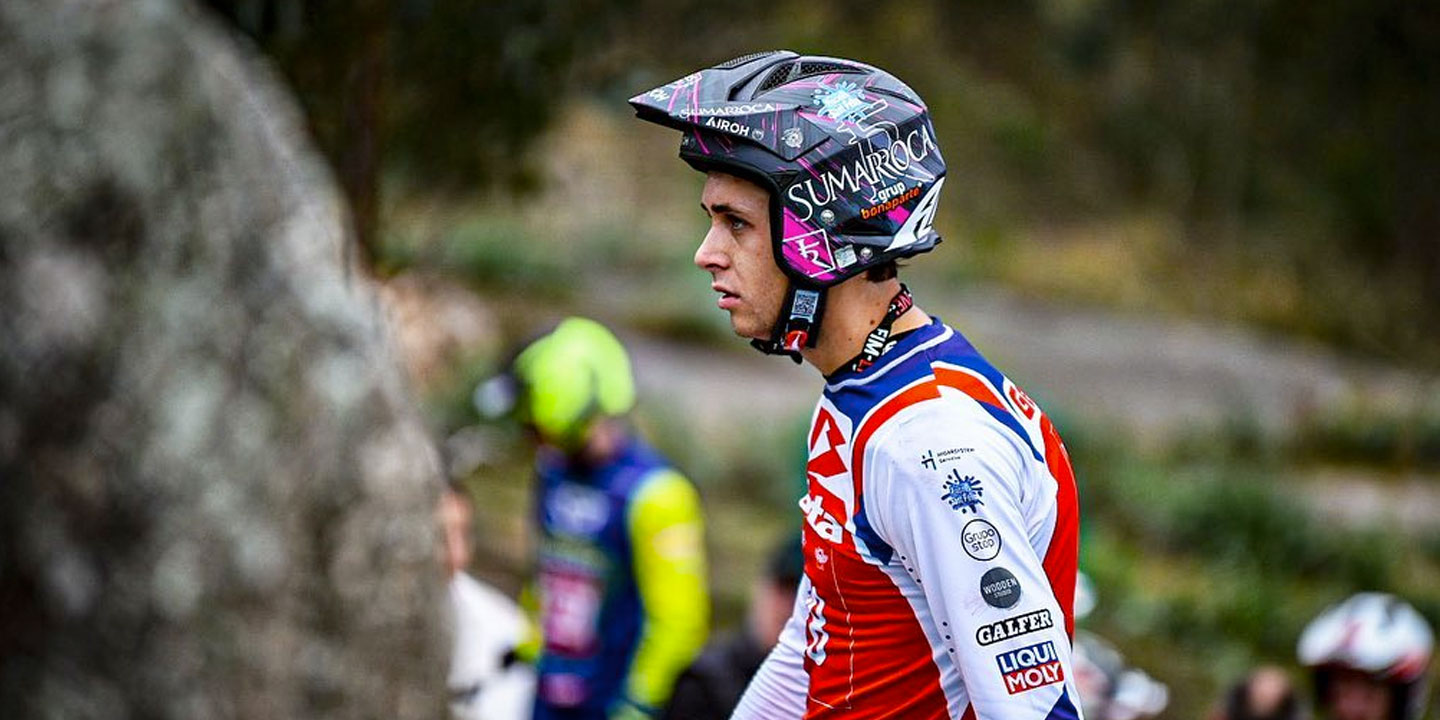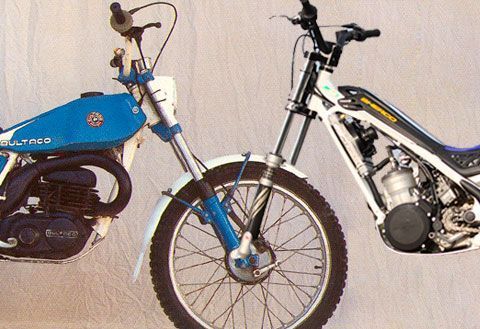
Between the two, we experienced a turning point at the end of the 90s, when Bultaco once again showed off its mythical rampant toe on a trial bike, although in this case on a completely different concept. However, patent problems – a Japanese brand produces a line of tires with that name – forced the name of its model to be changed. Sherco (an acronym for SHERpa and COmpany) would be the name chosen and its creators Jacques Coll & Paxau.
From that moment on, Sherco’s positioning has maintained the same patterns: to offer a popular bike, easy to ride, light, powerful and innovative. Its great results in competition with Albert Cabestany are also an impetus to continue gaining market share and gain market share against its biggest competitor: Gas Gas.
But let’s go back to the origins. Bultaco began its journey in this specialty back in 1965, after creating the Sherpa model 10 – you can see it in this report- from the Sherpa N and with Sammy Miller as the protagonist. This is a date quite far from the year 1981 from which our protagonist dates: the Bultaco Sherpa 199B, better known as the “trade unionist”. The pseudonym appealed to the deep financial crisis in which the brand of the rampant finger was plunged. The 199B symbolized the effort that a brand with hardly any resources, but with a lot of passion, had to make to keep its assembly lines operational; In the end, it ended up being produced with the stock that the factory itself accumulated on his shelves, so it is not strange to find pieces of his firstborn, the Frontier, in this version.
Text: David Quer / Sherpa 199B owned by David Quer / Sherco Share: Chema Quer
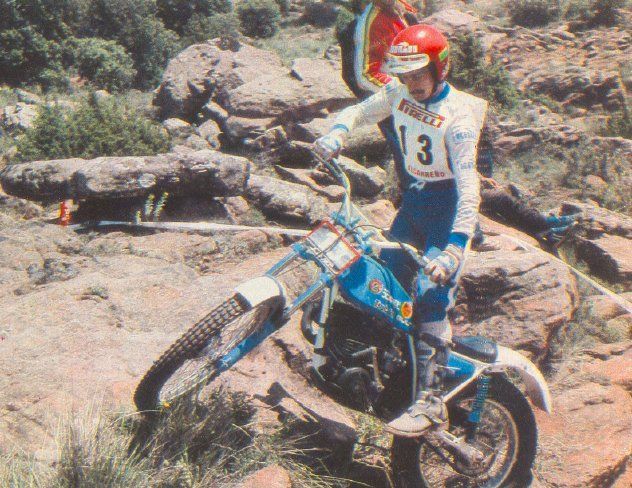
If you take a general look at the models we are dealing with and we tell you that there are points where they converge, you may think that we are about to tie, but we are not. Let’s start by looking at the wheels: Bultaco’s weighs 7.3 kilos (front) and 10.1 kilos (rear), while Sherco’s weigh 6.7 and 9.5 kilos, respectively. Curiously, the tyre sizes are identical – 2.75 x 21 at the front and 4.0 x 18 at the rear.
The structure is also very similar, but since Michelin and Dunlop knocked down Pirelli with their radial tyres the evolution took a different direction; Later, the proliferation of tubular tires allowed the rear wheels to roll with lower pressure and minimize the risk of blowouts.
Now let’s zoom out a bit and to get a bigger picture. Looking at both mounts, appearances can be deceiving; the 199B seems to have more fork launch and longer wheelbase, but on paper things change. Perhaps the poise transmitted by the front wheel is misleading, but over the years intense work has been done to bring the swingarm closer to the drag sprocket in order to achieve greater traction, livelier reactions and, above all, agility. It’s pure logic: by having all the elements of the engine more collected, we have the center of gravity defined around the swingarm line, which after all is the fundamental piece of dynamic balance.
Now it is longer and goes all the way to the engine, achieving greater progressivity. Why did the Sherpa do so well with this system? Because in the past, people always drove with both wheels on the ground, while modern ones are designed to be piloted in other types of areas and usually with the wheel in the air.
If you look closely, the section of both swingarms has a homogeneous shape with their respective frames. The shapes have changed enormously, both due to the requirements of thermodynamics – the split cradle to house the radiator on the modern motorcycle – and aesthetic and functional.
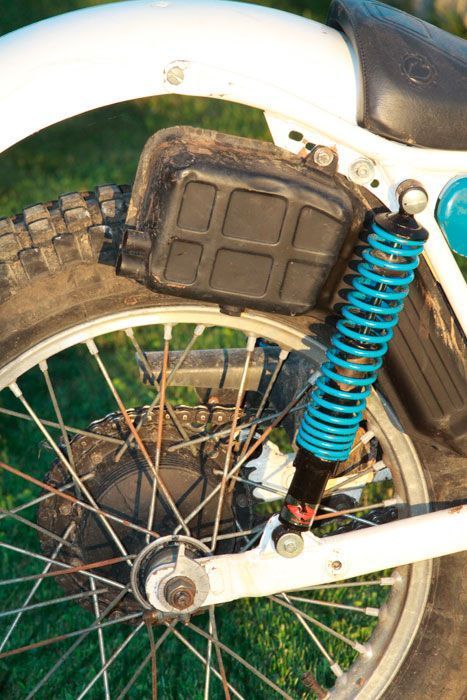
Two
worlds
S
Undoubtedly, the most important evolutionary leap has been made by suspensions, engines and brakes. The forks are still telescopic, but the diameters of the bars have grown from 35 to 38 mm and the travel is 20 mm larger. As these bikes were driven on the ground, tracing, the forks had larger hydraulic pitches and used denser oils (SAE 10 or 15), while their settings were limited to playing with densities or spring pressure. The current ones are very different, especially inside, as they have internal cartridges that act independently on compression and extension, as well as being complemented with oils lower density (SAE 5 or 7.5).
At the rear, the evidence reigns: two shock absorbers versus one. The classic is direct-driven, while the modern is complemented by a linkage system. In addition, travel has increased by 75% – currently 175 mm. Considering that the current trial inherits a lot from the Bike Trial (the school of Bou or Tarrés), we will understand that the trial, as we understand it today, owes a lot to the abysmal evolution of this component.
As for the brakes, as you can see, they are two completely opposite worlds. It is not comparable to stopping the 92.5 kilos with shoes or stopping 72 with hydraulically operated calipers.
Great references
We finally come to the nerve center of both models: the engines. We’ll start with data. The engine block: 32.6 kg for the Bultaco compared to 20.1 kg for the Sherco. Exhausts: 4 kg for the Bultaco and just over 2 kg for the Sherco. These data suggest that the evolution of the block has been one of the architects that have allowed the whole to lose almost 20 kilos over the years. And on the inside, how have they changed? The Sherpa has two crankcases, one for the gearbox and one for the clutch, both with different oils to ensure their durability – SAE 90 and SAE 30, respectively. In modern a multigrade oil does the same thing.
The classic engine, unlike the current one, mounted counterweights on the crankshaft and in order not to unbalance it, the ignitions were ballasted. As a curiosity, all elements were embraced on the old crankcases, while now it is the frame that embraces the elements. Ignitions have also changed a world. The platinums and capacitors of the Sherpa were great enemies of humidity and required extensive maintenance, while in the Sherco it is completely electronic. Before, the advances and delays of the ignition point were manipulated, now the latest trend is to play with the predefined maps from a convenient device placed on the handlebars. The same goes for clutches; In the past, they were attenuated by looking for engines that remained stable at very low revs, being heavy, while nowadays inertia does not prevail, but rather that they are immediate and the pilot can make them skid to properly dose the power.
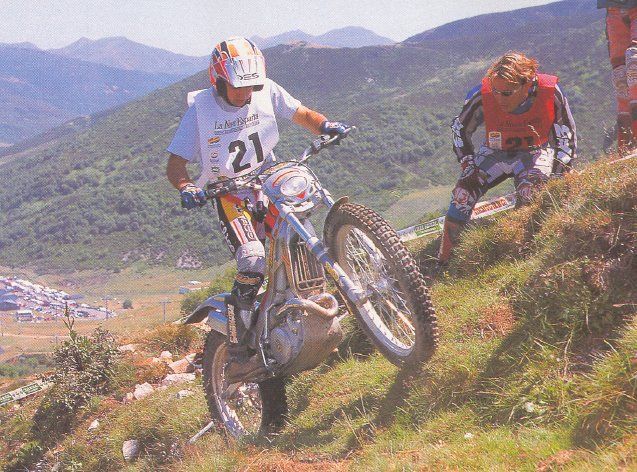
On a dynamic level, both models diverge on certain points: they are an example of stability compared to their competitors and they drive with a fairly backward position. The Sherpa doesn’t sit well with sudden changes of direction, you have to accompany it a lot with your body, while on the Sherco the riding is one hundred percent intuitive. They are two different philosophies for the same trial; Which do we prefer, stability and being slow, or agility and being nervous? Difficult dilemma, right? Riding styles have evolved in parallel with the models. Before, the fashion, imposed by the English, was the “non clutch” and the zones were pure dynamism. Tarrés was the one who marked the turning point and laid the foundations of modern trial, starting to stop inside the zones by causing the clutch to slip.
FEATURE: HISTORY OF SHERCO AND THE EVOLUTION OF ALL ITS MODELS
{bonckowall source=”2″ pkey=”album” pvalue=”dqtrialworld” pvalue2=”ShercoVsSherpa” }{/bonckowall}
